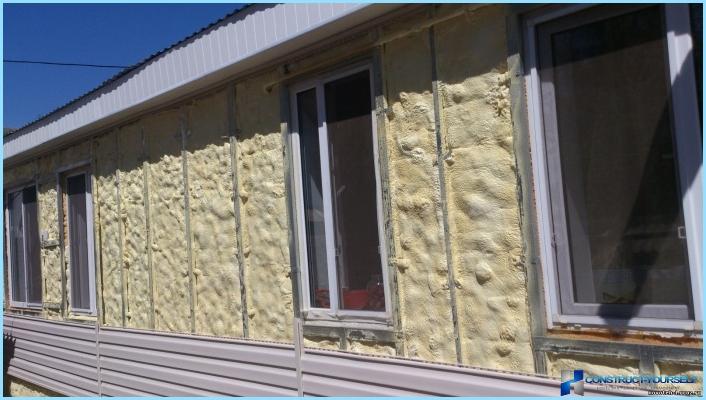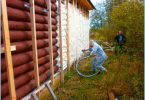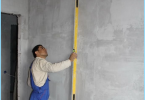The contents
When creating comfortable conditions for accommodation it is important to devote time to warming. Because it allows to significantly reduce heat loss, to maintain a pleasant temperature for the occupants at any time of the year, reducing heating costs. There is a variety of methods and materials, but few of them can compare to penopoliuretanom.
Polyurethane foam for insulation ↑
Polyurethane foam — a highly practical and extremely popular material for insulating buildings. It is effective both for exterior and interior treatment of the walls, allowing you to save on repairs. The prevalence of polyurethane foam is increasing, which ensures its reliability, durability and efficiency. It is the combination of these three qualities makes the polyurethane foam the optimal insulation solution for the building.
What is polyurethane foam? It is a polymer that is applied by spraying. Previously it comes in the form of components — polyisocyanate and polyol, which are further mixed before applying. After contact with the surface of the substance begins to expand, turning into a frothy layer.
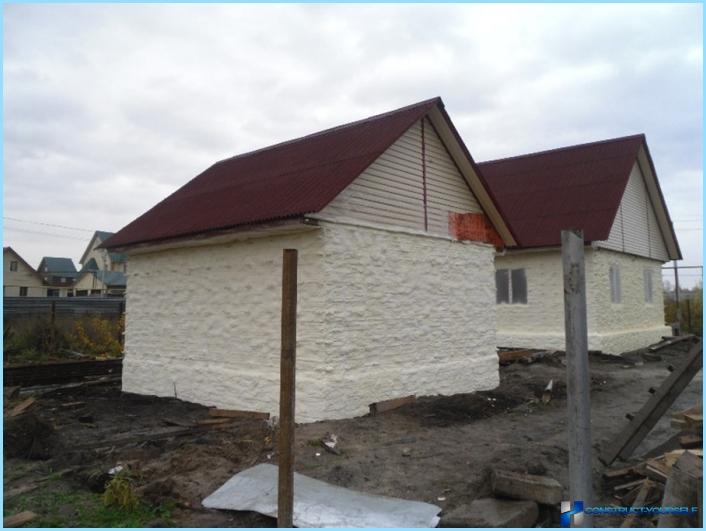
Polyurethane foam is applied with special guns and used on virtually any surface. Thanks to this convenient method of application it is applicable to:
- Relief;
- Smooth;
- Composite.
And other surfaces, which has virtually no effect on the properties of polyurethane foam. Although for the most part used the spray, sometimes it is possible to fill. However, regardless of this, the effectiveness of this insulation is the same.
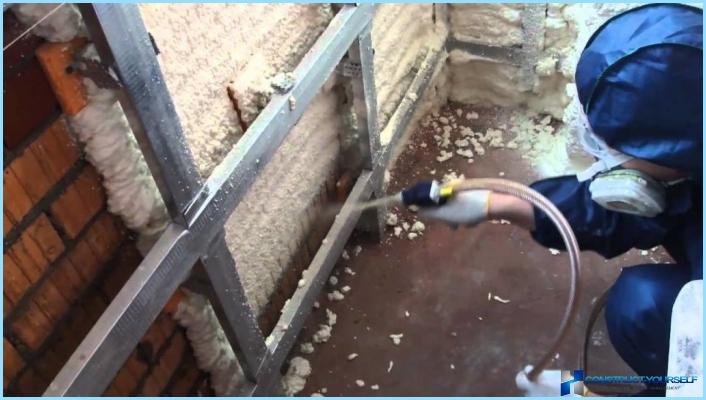
There are two varieties of polyurethane foam: open and closed cells. The first option is less dense, and its price is much lower. But the problem is that this structure is not shielded from the outside, so is suitable only for interior decoration. He easily picks up moisture, is no different from a sponge.
The second option is more reliable insulation. A dense polyurethane foam, well protected against moisture. He non-permeable, and are often used for external insulation of buildings. However, the price of such material is much higher.
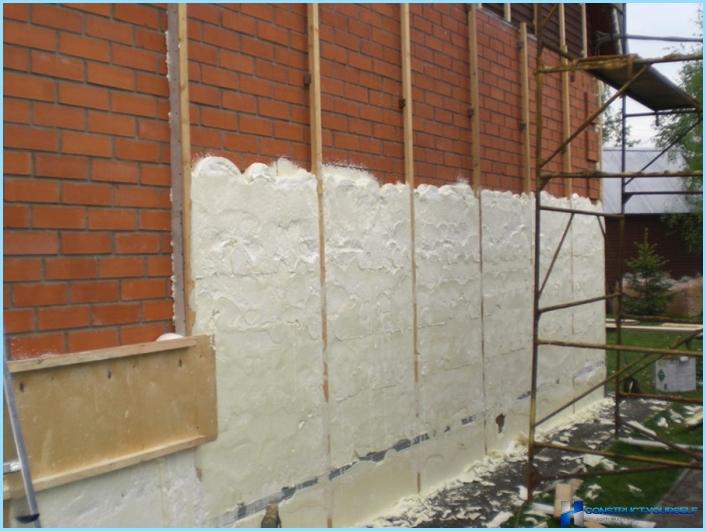
What to choose is an individual matter. However, the polyurethane foam with open cells is better to use for insulating the interior. As the work will be carried out on the insulation of the walls, then this option is perfect.
The advantages of material ↑
Polyurethane foam has many advantages that make it the preferred choice for insulating the walls. The big advantage for many is the lack of shipping costs. Regardless of the amount of work all the components can be translated in the car. Given transportation costs of insulation means it allows you to save on insulation.
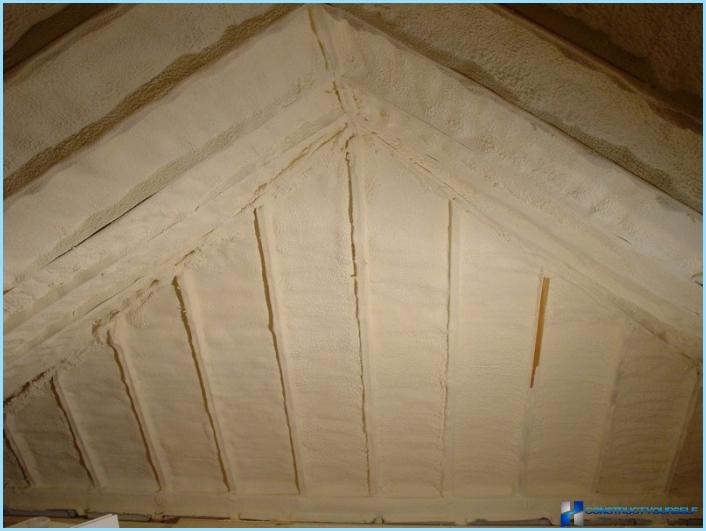
Polyurethane foam has several major advantages:
- Perfectly suited to virtually any surface.
- Creates a uniform insulating layer without joints and fasteners.
- Has a low weight and high efficiency relative to other insulation methods.
- Able to serve more than 50 years.
- Protects from wind, moisture and noise.
- Safe for humans in terms of toxicity and fire resistance.
The big advantage of this direction in that it forms a solid layer of polyurethane foam with no seams and fasteners. This allows to reduce heat loss, protect from noise and draughts. In addition, the polyurethane foam is resistant to temperature changes, natural processes, as well as insects and rodents. Its only drawback — resistance to physical damage, however, additional surface finish such a problem will not arise.
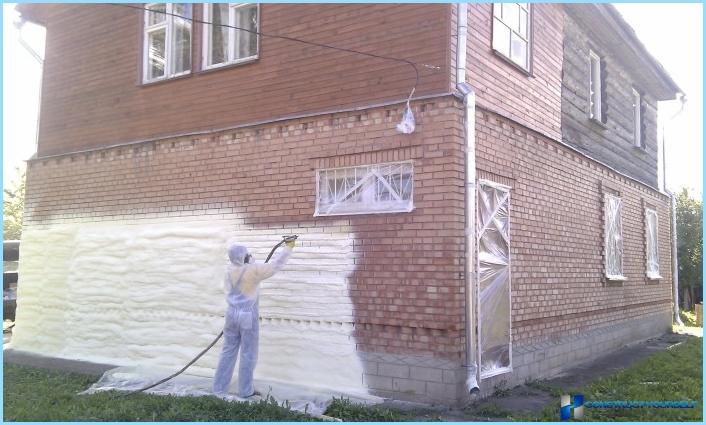
In addition, the polyurethane foam has a very low price, which is much lower than with traditional insulation methods. This reduces not only transport, but when you purchase components. And its conductivity one and a half times less than that of the polystyrene, making it optimal in regions with harsh climate. Foam, mineral wool, and other materials can’t match it in effectiveness of insulation.
Although polyurethane foam is able to burn, it ignites only in direct contact with the flame. So when you need fire safety it is absolutely harmless and will not cause a fire.
Preparing for the insulation of walls ↑
Polyurethane foam is used as for the exterior, and interior. It’s easy to warm facade of the house, however, is used for these tasks it is quite rare. Mainly it is used for internal processing, where its advantages are particularly pronounced.
Before starting work necessary to prepare the room and surface that will be sprayed polyurethane foam. Need to move all the furniture out, remove the curtain rods and chandeliers, and other items on the walls. The room should be empty. Further steps include removing Wallpaper, tiles and other finishes to the plaster.

Next, you need to check the surface for any of the following symptoms:
- Cracks;
- Unevenness;
- Fungus and plants.
All of this must be addressed in order to prolong the lifespan of polyurethane foam. Otherwise there is a risk that it will peel in a few seasons.
Further, the surface should be treated with a protective solution that prevents the growth of mildew and increase the lifetime of the finish.
After all the training you need to establish a framework if it is missing. Apply the finish on the foam is impossible, such a framework is too soft for this. Therefore, it is necessary to create the frame from metal or wood. Metal choice is even better, because in the future it is possible to place the blocks of drywall.
After all the preparatory stages, you can begin applying the polyurethane.
Insulation of walls with polyurethane foam ↑
It should be noted that for insulation with polyurethane foam will need special equipment. It is necessary to spray the solution on the surface manually, such exercise will not work. So you need:
- A gun for spraying the mixture;
- The cylinders with the mixture;
- Tube for connection.
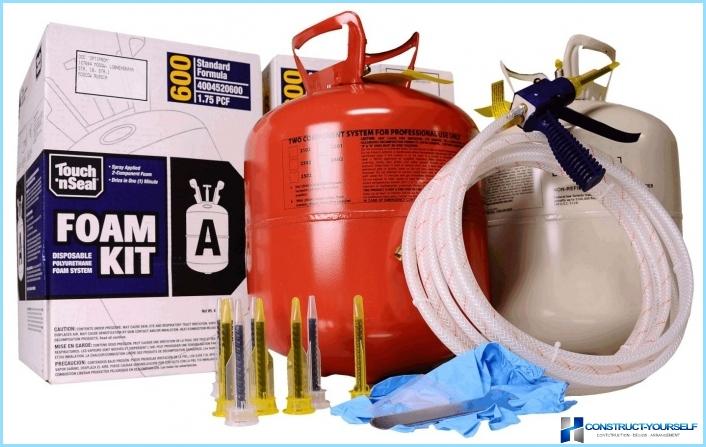
That’s all, no additional element is not necessary. The gun can be several nozzles, which will only make it easier.
Will also need a substrate in the form of paper, because the drops can go on the floor. This is true in the repair the premises, as to scour the polyurethane foam is extremely difficult. For this reason, it is necessary to take old clothes that you do not wish to throw away. The respirator is also very important for those who spray the stuff.
You can then get to work. So as a pre-assembled frame allows you to divide the surface into sectors, it will simplify the process. You need to connect all the equipment to put on a respirator and start spraying polyurethane foam. To put it is gradually and evenly, starting from the edge of the sector. After completion of the first section to go straight to the second.
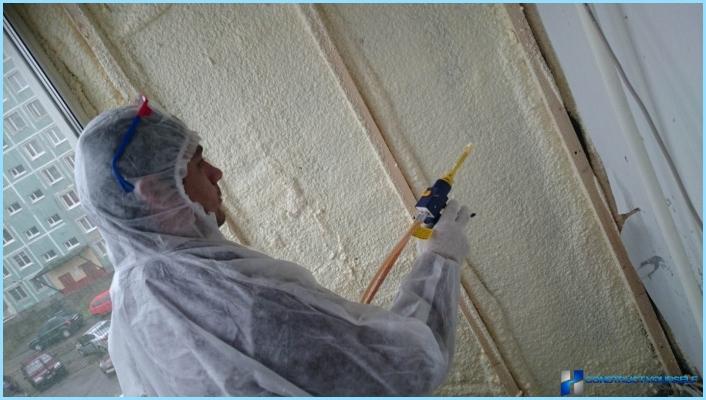
It is important to note that polyurethane foam is sprayed in a thin layer. It is in any case widens, so do not rush. In the future you can go a few more times to achieve the desired result. But if you just spray a lot of foam, it can prevent its extension.
The time of foaming and curing of polyurethane foam — about 1 minute, so the work can be performed quickly. The second approach is to begin only after solidification of the material. Often enough a 2-3 layers to create a layer of sufficient thickness.
After that, once the foam is cut, eliminated the flaws, and are the finishing touch. Next is the final finish on the frame that is often used drywall or other similar material.
For a better understanding of the process, it is recommended to watch this video. Here shows in detail the process of applying polyurethane foam on a surface and describes its nuances:

